Fertiliser made by yourself in the comfort of your own garden is completely safe for the environment and rich in organic matter.
Make your own organic fertiliser from common garden and meadow plants.
Fertiliser made by yourself in the comfort of your own garden is completely safe for the environment and rich in organic matter.
In terms of effectiveness, it does not fall short of its chemical counterparts, which allows you to reduce the use of synthetic fertilisers or eliminate them entirely, which will obviously mean lower costs for you. Watering or spraying with this precious source of easily assimilable substances (e.g. iron, nitrogen or phosphorus), satisfies diverse plant needs and stimulates their proper growth and abundant flowering, which will turn into high crop yields.
What is plant-based organic fertiliser,
commonly known as liquid manure? It is a product of decomposition of green matter from plants commonly considered weeds. The fermentation process takes place in water (plain rainwater is recommended) and lasts from several days to several weeks, depending on the air temperature inside the tank and stirring frequency. Remember that the higher the temperature, the shorter is the process.
Obtaining the finished preparation is not difficult but it takes time and requires you to follow certain rules. Put the Combioliq tank in a secluded, warm and half-shaded place. Fill the sieve with plants (the best would be healthy, young and slightly torn up shrubs) and top up with water to the proper level.

Protect your crops
against pests, harmful fungi and bacterial infections, while the fertilised soil will improve in terms of water absorption and retention properties, increasing plants’ resistance to drought. Sustainable organic waste management combined with old, well-proven recipes will bring universal benefits to the environment and high crop yields.
The Combioliq tank
ensures safe storage of the preparation (in a shaded place, usually for more than one month), while the special cover design protects the liquid against insects and allows free gas exchange, which effectively eliminates the unpleasant smell of a maturing fertiliser.
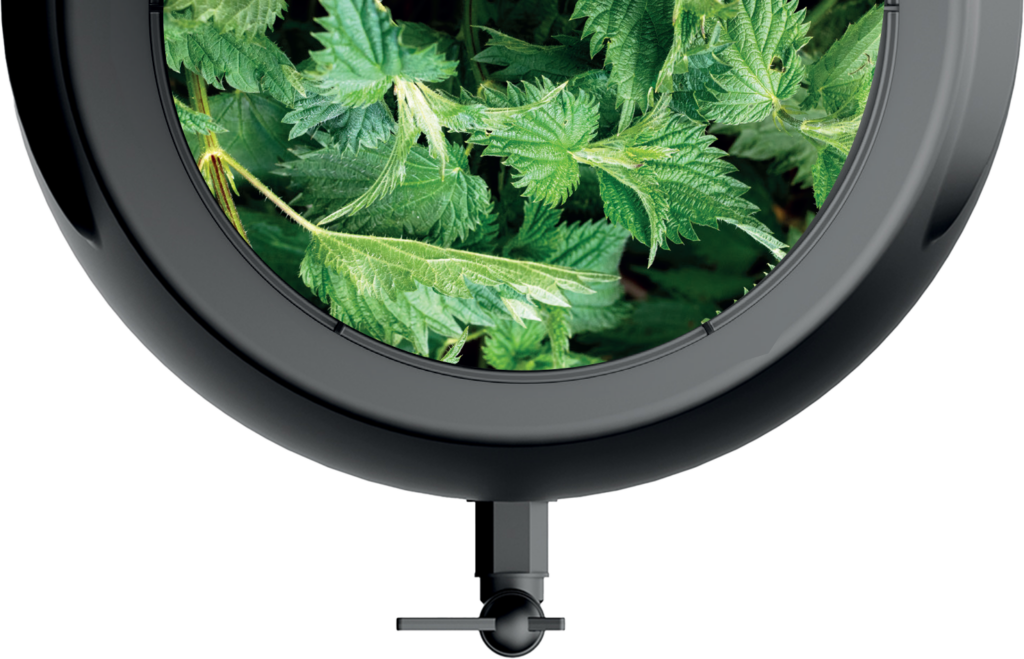
Nettle | Urtica
Nettle-based fertiliser
Rich in nitrogen, potassium, magnesium, zinc, calcium and other microelements, vitamins and flavonoids. Used to stimulate the growth of and spray numerous fruit plants, e.g. tomatoes (helps protect against blight), cucumbers, celery, potatoes, pumpkin, cruciferous vegetables, raspberries, strawberries, ornamentals, conifers, as
well as fruit shrubs and trees.
Proportions:
-1 kg slightly torn up fresh nettle (no flowers, no seeds)
– 10 litres rainwater
The fertiliser is usually ready after approx. 2-4 weeks. Then, the liquid stops foaming, marking the end of the fermentation process.
Solution application:
| plant fertilisation | 1 : 10 |
| spray against pests (aphids, spider mites) | 1 : 20 |
| eliminating fungal diseases | 1 : 5 |
| fertilising plants affected by physiological disorders, e.g. leaf chlorosis caused by magnesium deficiency | 1 : 20 |
| supporting leaf and flower development | 1 : 50 |
| enriching soil | undiluted |
| boosting the composting process using the residual undiluted solution and fermented plants | undiluted |
| enriching compost with nutrients | undiluted |
Nettle-based fertiliser should not be used for onion, garlic, beans, peas, azalea, heather and rhododendron. Do not use for plants that require poor soil, such as yarrow, bitterweed, golden rod, sunflowers, or slow-growing plants, such as groundcover and creeper plants.
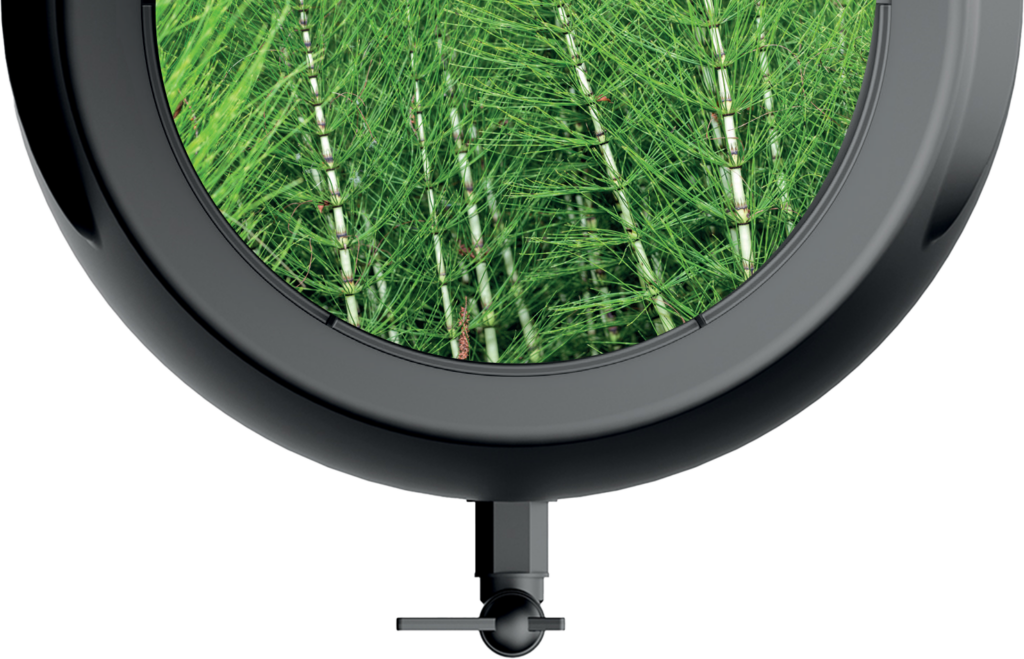
Field horsetail | Equisetum
Horsetail-based fertiliser
Improves the soil properties, while silica it contains strengthens the plants and boosts their resistance to fungi, e.g. those causing grey mould. It proves perfectly against pests – used against spider mites and aphids. Used for watering near the roots – at least once per season – of vegetables, flowers, fruit shrubs and trees, or lawn. Spray the plants during vegetation in sunny weather.
Proportions:
– 1 kg fresh field horsetail
– 10 litres rainwater
The fertiliser is ready after approx. 1-3 weeks (depending on the temperature). Then, the liquid stops foaming, marking the end of the fermentation process. The solution is ready, when the field horsetail leaves fall off the stems.
Solution application:
| plant fertilisation | 1 : 10 |
| spray against pests (aphids, spider mites, armoured scale insects) | 1 : 50 |
| liminating fungal diseases | 1 : 5 |
| boosting the composting process using the residual undiluted solution and fermented plants | undiluted or diluted |
| enriching compost with nutrients | undiluted |
Beneficial bacteria contained in the fertiliser support the soil processes, including humus formation.
Use regularly as a natural fertiliser to strengthen the plants.
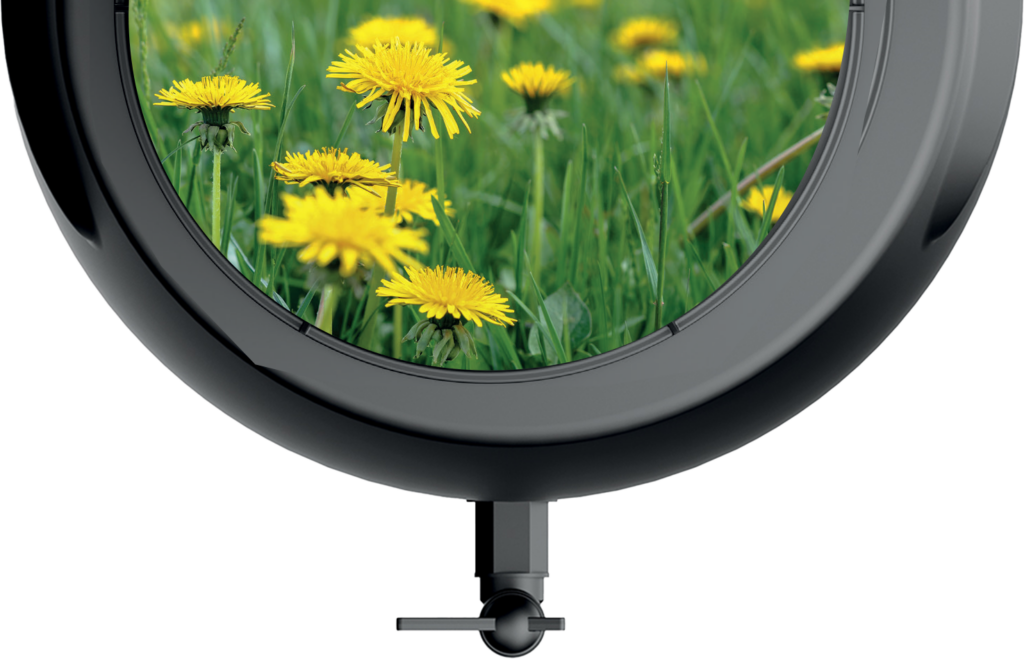
Common dandelion | Taraxacum
Dandelion-based fertiliser
Common dandelion leaves (no flowers) have basic pH and contain mostly nitrogen. The leaves are harvested from spring to autumn. The plants do not have to be torn up and the Combioliq tank simply needs to be put in a shaded or half-shaded place.
Fertiliser used to feed numerous fruit plants, e.g. strawberries, raspberries, currants, wild strawberries, gooseberries, fruit trees, vegetables e.g. kale, cabbage, tomatoes, ornamentals and roses.
Proportions:
– 1 kg common dandelion, possibly also flowers (no tearing up)
– 10 litres rainwater
The fertiliser is usually ready after approx. 2-4 weeks. Then, the liquid stops foaming, marking the end of the fermentation process. Common dandelion does not decompose completely during fermentation.
Solution application:
| boosting the plant growth | undiluted |
| spray against pests (aphids) | undiluted |
| soil remediation | undiluted |
| boosting the composting process using the residual undiluted solution and fermented plants | undiluted |
| enriching compost with nutrients | undiluted |
Successfully used for the remediation of poor, barren or very eroded soil. It can be used to water compost to boost the decomposition of plant residues.
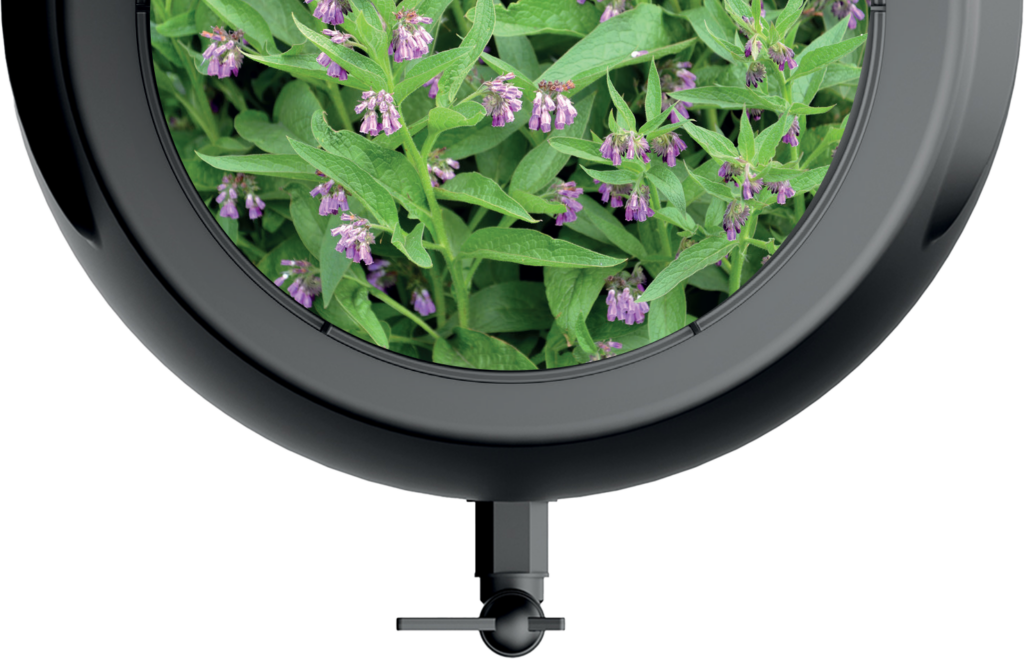
Common comfrey | Symphytum
Comfrey-based fertiliser
One of the strongest and growth-boosting plants, rich in minerals, potassium and nitrogen (although not as much as nettle-based fertiliser). Beneficial bacteria contained in the fertiliser support the soil processes, including humus formation. It is a fantastic fertiliser for numerous fruit plants, such as tomatoes, pepper or aubergine, flowers, as well as fruit shrubs and trees. Proves well in preventing and eliminating aphids on cabbage or carrot leaves.
Proportions:
– 1 kg common comfrey (no tearing up)
– 10 litres rainwater
The fertiliser is usually ready after approx. 2-4 weeks. Then, the liquid stops foaming, marking the end of the fermentation process.
Solution application:
| plant fertilisation | 1 : 10 |
| spray against pests (aphids, spider mites, armoured scale insects) | 1 : 50 |
| liminating fungal diseases | 1 : 5 |
| boosting the composting process using the residual undiluted solution and fermented plants | undiluted or diluted |
| enriching compost with nutrients | undiluted |
Young comfrey is richer in nitrogen, while flowering comfrey in potassium. Use regularly throughout the entire vegetation period (by watering) as a natural fertiliser to strengthen the plants and stimulate their growth. Spray plants with the fertiliser only as a prevention measure.
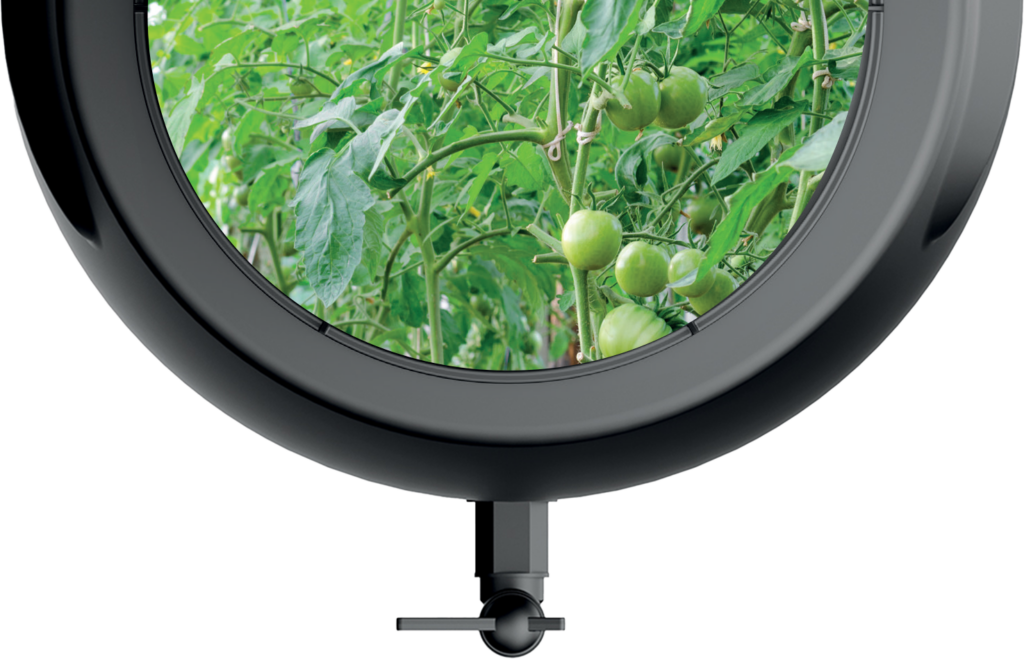
Tomato leaves | Lycopersicon
Tomato leaf fertiliser
Fresh or fallen tomato leaves and shoots are a rich source of nitrogen and potassium. The fertiliser is perfect for fruit and flowering plants, as well as repels snails feeding on flowerbeds, spider mites, as well as flea
beetles that particularly threatens cabbage, kale, rocket and radish.
Spraying will be effective against an ant invasion that contributes to the occurrence of aphids.
Proportions:
– 3 kg tomato leaves and / or shoots
– 10 litres rainwater
The fertiliser is ready after approx. 2-3 weeks. Then, the liquid stops foaming, marking the end of the fermentation process.
Solution application:
| fertilisation | 1 : 10 |
| spray against pests | 1 : 10 |
| boosting the composting process using the residual undiluted solution and fermented plants | undiluted |
| enriching compost with nutrients | undiluted |
There are no contraindications to using the solution throughout the entire plant vegetation period. Use it regularly (once every two or three weeks) to water selected species of vegetables, flowers as well as fruit shrubs and trees, until the beginning of September. In order to boost the benefits of the tomato-based fertiliser, you can include field horsetail or nettle in the recipe.
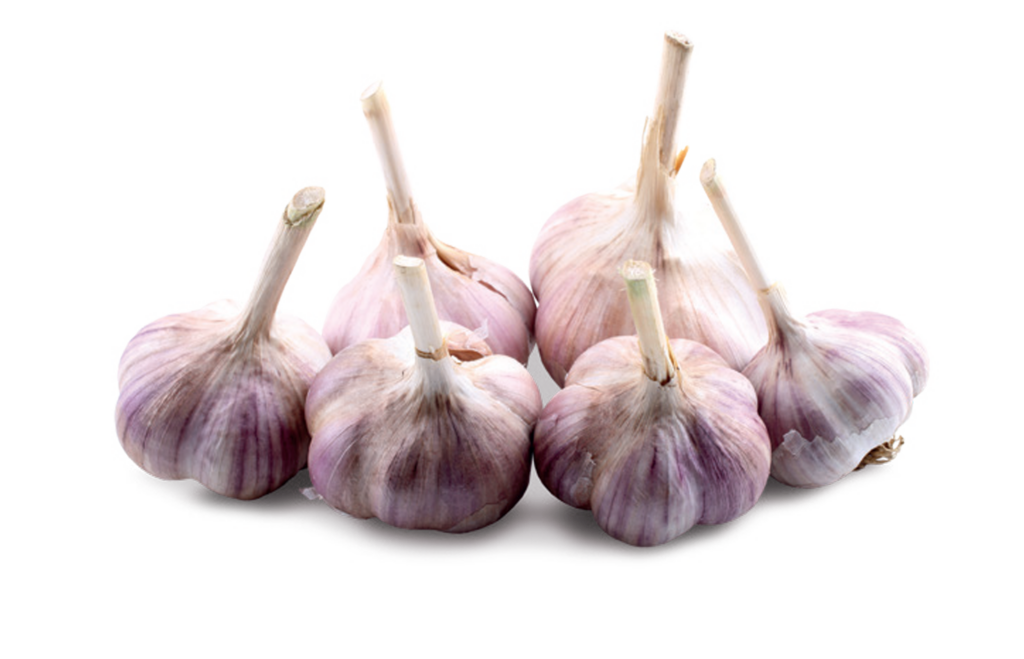
Garlic | Allium
Garlic-based fertiliser
Strengthens and protects plants and fruit trees against fungal diseases.
Proportions:
– 75 g ground garlic cloves
or 500 g fresh leaves
– 10 litres rainwater
The fertiliser is ready after approx. 2-4 weeks. Then, the liquid stops foaming, marking the end of the fermentation process.
Solution application:
| fertilisation | 1 : 10 |
| spray against pests (carrot fly) | undiluted |
| boosting the composting process using the residual undiluted solution and fermented plants | undiluted |
| enriching compost with nutrients | undiluted |
Remove the fermented residues to a compost. This will boost the composting process and enrich it with nutrients and minerals.